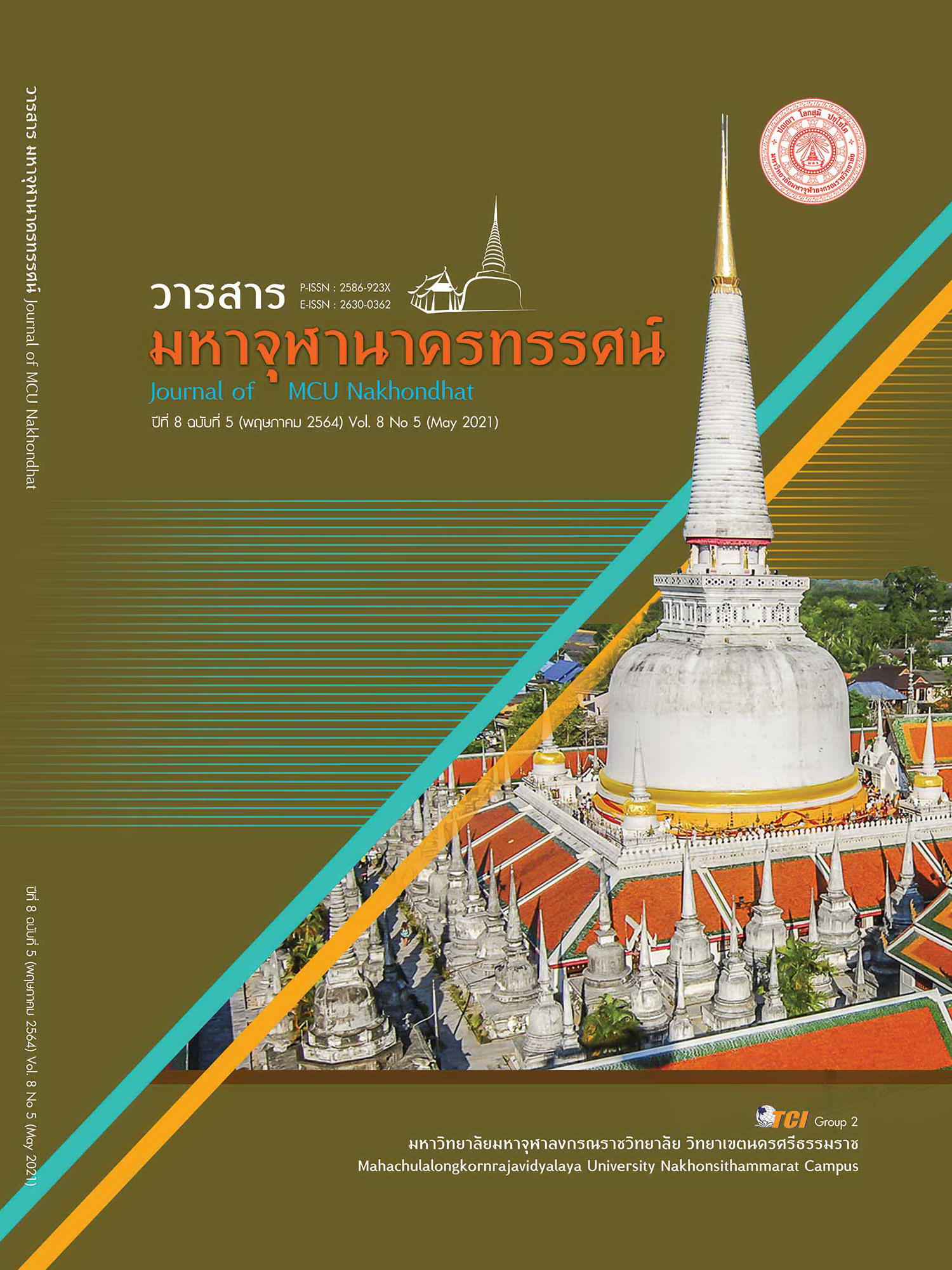AN ANALYTICAL STUDY ON STATUS AND ROLES OF WOMEN TOWARDS THE STABILITY OF BUDDHISM
Main Article Content
Abstract
The objectives of this research article were 1) to study the status and roles of women in the Buddhist era and after the Buddhist era, 2) to study the status and roles of women in the present time, and 3) to analyze the status and roles of women and the stability of Buddhism. It is a qualitative research. The population is nuns and nuns, both in modern and modern times. The subjects were selected from those with outstanding achievements in building stability to Buddhism. It is a search from the Tripitaka, an commentary on Dika Anudika Pakornwiset, and related researches. Collect information by taking notes and copying them. The data were analyzed according to the research question: 1) What role did Buddhist women play in the stability of Buddhism, 2) How women in modern times play a role in the stability of Buddhism, and 3) How much influence do women have on the stability of Buddhism. The results of the research were as follows: 1) the status and roles of the sample women, there were found the diversity of families and social origins but they also made the stability of Buddhism. In terms of pattern for establishing stability in Buddhism, in the Buddha’s time and after, it was discovered the difference and similarity. That is to say, women in the Buddha’s time are divided into three personalities viz., 1) participated in the monastic order provision, 2) propagated Buddhism and 3) created Buddhist religious places. 2) as for women in the post-Buddha’s time, there were three personalities as well, the unique difference obtains the first, they cooperated in the revised and preservation of Buddhist monastic order. The rest of the personalities were the same as the above mentioned. The first character model is considered as a mechanism for building an internal stability, the rest as an external stability mechanism toward Buddhism and 3) Regarding the family status and social of women, most of them were the elite and very important person in the countries. They were the role model for developing decisions to perform the wholesomeness as well. However, some of the stability of Buddhism, both internal and external, was due to the status and role of the sample women until today.
Article Details
References
กิตติ วัฒนะมหาตม์. (2544). จามเทวี จอมนางหริภุญชัย. กรุงเทพมหานคร: สำนักพิมพ์มติชน.
คณาจารย์ มหาวิทยาลัยจุฬาลงกรณราชวิทยาลัย. (2550). ประวัติศาสตร์พระพุทธศาสนา. กรุงเทพมหานคร: ห้างหุ้นส่วนจำกัด นวสาส์น การพิมพ์.
. (2555). วรรณคดีบาลี. กรุงเทพมหานคร: ห้างหุ้นส่วนจำกัด นวสาส์น การพิมพ์.
งามพิศ สัตย์สงวน. (2547). การวิจัยเชิงคุณภาพทางมานุษยวิทยา. (พิมพ์ครั้งที่ 5). กรุงเทพมหานคร: สำนักพิมพ์แห่งจุฬาลงกรณ์มหาวิทยาลัย.
บรรจบ บรรณรุจิ. (2539). ภิกษุณี:พุทธสาวิกาครั้งพุทธกาล. กรุงเทพมหานคร: เคล็ดไทย.
พระมหาชินวัฒน์ แสงชาตรี. (2548). ศึกษาวิเคราะห์บทบาทของภิกษุณีในสมัยพุทธกาล. ใน วิทยานิพนธ์ศิลปศาสตรมหาบัณฑิต สาขาวิชาปรัชญา. มหาวิทยาลัยขอนแก่น.
มหาจุฬาลงกรณราชวิทยาลัย. (2539). พระไตรปิฎกฉบับภาษาไทย ฉบับมหาจุฬาลงกรณราชวิทยาลัย. กรุงเทพมหานคร: โรงพิมพ์มหาจุฬาลงกรณราชวิทยาลัย.
สุเทพ พรมเลิศ. (2553). คัมภีร์มหาวงศ์ ภาค 1. กรุงเทพมหานคร: โรงพิมพ์มหาจุฬาลงกรณราชวิทยาลัย.
อุทัย หิรัญโต. (2530). หลักการบริหารงานบุคคล. กรุงเทพมหานคร: ระพัชนา.


